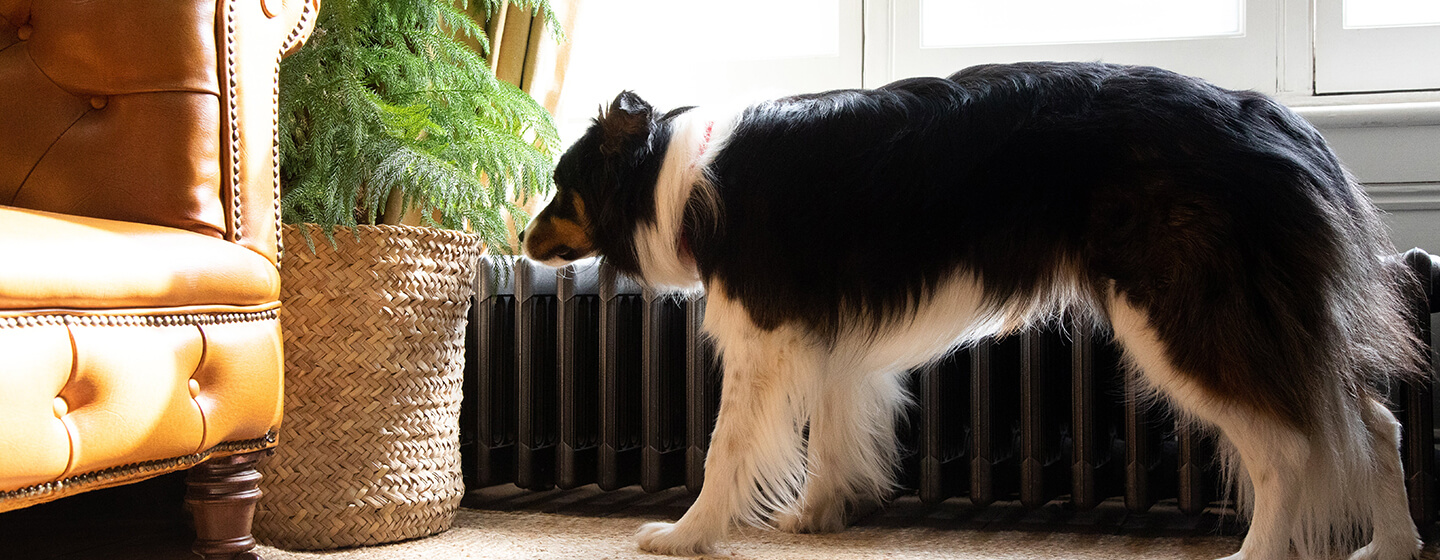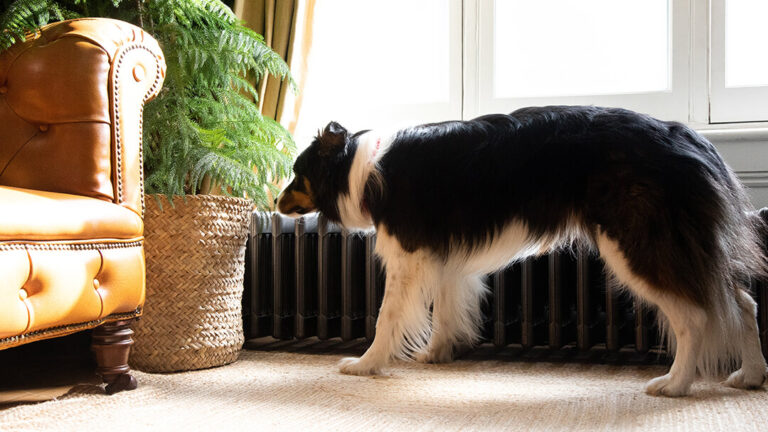When your dog is in labor, you can identify it through signs such as restlessness, panting, pacing, refusal of food, and potentially vomiting. Nesting behavior may also begin, indicating that it’s time to place her in the whelping box.
These signs are crucial for recognizing the start of labor in dogs.
:strip_icc()/whelping-canine-labor-and-delivery-1117846copy-f0e37cb7ab104013819bf74cd3fc3317.jpg)
Credit: www.thesprucepets.com
Signs Of Labor In Dogs
During labor, dogs may exhibit signs such as restlessness, panting, pacing, refusal of food, and vomiting. Changes in nesting behavior and a drop in temperature are also indicators that your dog is about to give birth. Pay close attention to these signs to ensure a smooth delivery.
Drop In Temperature
A drop in temperature is one of the earliest signs that your dog is going into labor. It’s important to monitor your dog’s temperature regularly during the last week of her pregnancy to look for any significant changes. Normal dog temperature is around 101 to 102.5 degrees Fahrenheit. However, when labor is approaching, her temperature may drop to around 98 to 99 degrees Fahrenheit. This indicates that labor is imminent and you should be prepared for the arrival of the puppies.Restlessness
As labor draws near, you may notice that your dog becomes restless and anxious. She may exhibit signs of restlessness such as pacing, unable to settle in one place, or constantly moving around. This restlessness is a natural response to the impending labor and is a signal that your dog is preparing to give birth.Changes In Nesting Behavior
Another sign that your dog is going into labor is a change in her nesting behavior. This refers to her desire to create a comfortable and safe place to give birth to her puppies. Your dog may start scratching, digging, or rearranging bedding material to make a nest. It’s a natural instinct for her to prepare a suitable environment for her puppies’ arrival.Vomiting
During the early stages of labor, some dogs may experience vomiting. This is typically due to hormonal changes and can be a normal part of the labor process. However, if your dog is vomiting excessively or appears distressed, it’s important to consult with your veterinarian for further evaluation.Loss Of Appetite
Many dogs experience a loss of appetite as they approach labor. This is completely normal and to be expected. It’s important to keep an eye on your dog’s food intake and make sure she stays hydrated. If your dog refuses to eat for more than 24 hours or shows signs of dehydration, contact your vet for guidance.Shivering
Some dogs may shiver or tremble during labor. This can happen due to the physical and emotional stress of the process. It’s important to provide a calm and comfortable environment for your dog during this time to help minimize any anxiety or discomfort she may be experiencing.Panting
Panting is another common sign of labor in dogs. It helps them regulate their body temperature and cope with the pain and stress of labor. If your dog is panting heavily and seems unable to relax, it’s important to monitor her closely and provide comfort and support as needed.Tiredness
As labor progresses, your dog may start to show signs of tiredness and fatigue. This is normal, as giving birth is a physically demanding process. Make sure to provide a calm and quiet space for your dog to rest and recover between contractions.In conclusion, there are several signs that can indicate when your dog is in labor. These include a drop in temperature, restlessness, changes in nesting behavior, vomiting, loss of appetite, shivering, panting, and tiredness. It’s important to familiarize yourself with these signs so that you can provide the necessary care and support for your dog during this critical time.Stages Of Dog Labor
Understanding the stages of dog labor is crucial for dog owners to ensure the health and safety of both the mother and her puppies. The labor process is divided into three stages, each with distinct characteristics and signs. It’s important to be aware of these stages to know when your dog is in labor and when to provide the necessary support and medical care. In this article, we will discuss each stage in detail and help you navigate through the process with ease.
Stage One
The first stage of dog labor is the preparatory stage. It includes various signs that indicate the impending arrival of the puppies. One of the primary indicators is a noticeable drop in the dog’s body temperature. Monitoring your dog’s temperature is crucial during this stage as a sudden decline, usually below 100 degrees Fahrenheit, signals that labor is imminent. Alongside the decrease in temperature, you may observe restlessness, panting, pacing, and refusal of food. Nesting behavior may also begin, which is an instinctive desire to find a comfortable and safe place to give birth.
During stage one, it’s recommended to place your dog in the designated whelping box, which she should already be accustomed to. This provides a secure and controlled environment for the labor and delivery process. If you notice these signs, it’s important to monitor your dog closely, as stage two of labor will soon follow.
Stage Two
Stage two of dog labor is the active delivery stage. This is when the actual birthing of the puppies occurs. It typically follows the preparatory stage, and you will notice strong and frequent contractions in your dog. These contractions may cause your dog to vocalize or exhibit signs of discomfort, such as whining or yelping. As the contractions intensify, the first puppy is usually born.
Most puppies are born headfirst, but it’s not uncommon for some to be born tail first. Each puppy is enclosed in a thin sac that the mother will remove, allowing them to breathe. After each birth, your dog may pass an afterbirth or placenta, which she may choose to eat. This is a natural instinct for dogs and helps with the postpartum recovery process.
Stage Three
The third and final stage of dog labor is the passage of the remaining afterbirths. After the birth of each puppy, the mother typically expels the afterbirth, which can vary in number depending on the litter size. This is an essential part of the labor process, as retaining any afterbirth can lead to health complications for the mother. It’s important to keep count of the afterbirths to ensure they are all expelled.
During this stage, your dog’s contractions will decrease in frequency and intensity. However, she may still have intermittent contractions as her body returns to its normal state. It’s crucial to observe your dog during this stage to ensure she is alert, caring for her puppies, and expelling all the afterbirths properly.
Understanding the three stages of dog labor is essential for any dog owner who wants to provide the best care for their pet. By monitoring the signs and progression of labor, you’ll be better prepared to assist your dog during this critical time. Remember, if you have any concerns or notice any signs of distress or complications, it’s always recommended to consult with a veterinarian for professional guidance.
What To Do During And After Dog Labor
When your dog goes into labor, it’s important to be prepared and know what to do to ensure a smooth delivery and care for your furry friend afterwards. Here are some essential steps to take during and after your dog’s labor:
Whelping Box Preparation
Before your dog goes into labor, make sure you have a whelping box ready for her. A whelping box provides a safe and comfortable space for the mother and her puppies during and after delivery. Here’s what you need to prepare:
- Size: Choose a whelping box that is large enough for the mother to move around comfortably, but small enough to keep the puppies contained.
- Bedding: Line the box with comfortable bedding, such as towels or blankets, to provide a soft and warm surface for the mother and her puppies.
- Heat source: Place a heat lamp or heating pad near the whelping box to maintain a constant temperature for the puppies.
- Privacy: Create a quiet and secluded area for the whelping box to ensure the mother feels secure during labor.
Assisting The Dog During Labor
During your dog’s labor, it’s important to monitor her closely and provide assistance if needed. Here’s what you should do:
- Monitor contractions: Observe your dog’s contractions and note the time between each one. This will help you determine if labor is progressing normally.
- Provide comfort: Stay with your dog and offer comfort and reassurance throughout the labor process. Gently stroke her and offer soothing words to help calm her.
- Assist with delivery: If your dog is having difficulty delivering a puppy, you may need to assist. Only intervene if you are confident and have received proper guidance from a veterinarian.
- Keep the area clean: As the puppies are born, remove the amniotic sacs and gently clean off any excess fluid from their noses and mouths. This will help them breathe and prevent infection.
The Day After Delivery
Once your dog has finished delivering her puppies, there are a few important steps to take to ensure their health and well-being:
- Count the puppies: Make sure to count all the puppies to ensure none have been left behind.
- Monitor the puppies: Watch for signs of normal behavior, such as nursing, sleeping, and gaining weight. If any puppies seem weak or are not nursing, consult a veterinarian.
- Provide a calm environment: Keep noise and disruptions to a minimum to allow the mother and her puppies to bond and rest.
- Feed the mother: Ensure the mother has access to fresh water and a nutritious diet to support her recovery and milk production.
By following these steps, you can help ensure a safe and successful labor for your dog and provide the best possible care for her and her puppies afterwards.

Credit: annarboranimalhospital.com

Credit: www.purina.co.uk
Frequently Asked Questions On How Do You Know When Your Dog Is In Labor
How Do Dogs Act When Labor Is Near?
When labor is near, dogs may show signs such as restlessness, panting, pacing, refusal of food, and nesting behavior. Their temperature may also drop.
What Are The Signs Of A Dog Going Into Labor?
Signs of a dog going into labor include a drop in temperature, restlessness, changes in nesting behavior, vomiting, loss of appetite, shivering, panting, and tiredness.
How Long Does The First Stage Of Dog Labor Last?
The first stage of dog labor typically lasts between 6 to 12 hours. During this time, your dog may show signs of restlessness, panting, pacing, refusing food, and nesting behavior.
What Comes Out First In Dog Labor?
During dog labor, the first thing that comes out is usually the puppy’s head, though sometimes they may come out tail first. After each puppy, the mother will pass the afterbirth (placenta), which she often eats.
Conclusion
Knowing when your dog is in labor is crucial for their well-being and the successful delivery of healthy puppies. Look for signs such as a drop in temperature, restlessness, changes in nesting behavior, vomiting, loss of appetite, shivering, and panting.
Once you notice these signs, it’s essential to provide a comfortable whelping box for your dog. By being attentive and prepared, you can ensure a smooth labor and delivery process for your furry friend.



